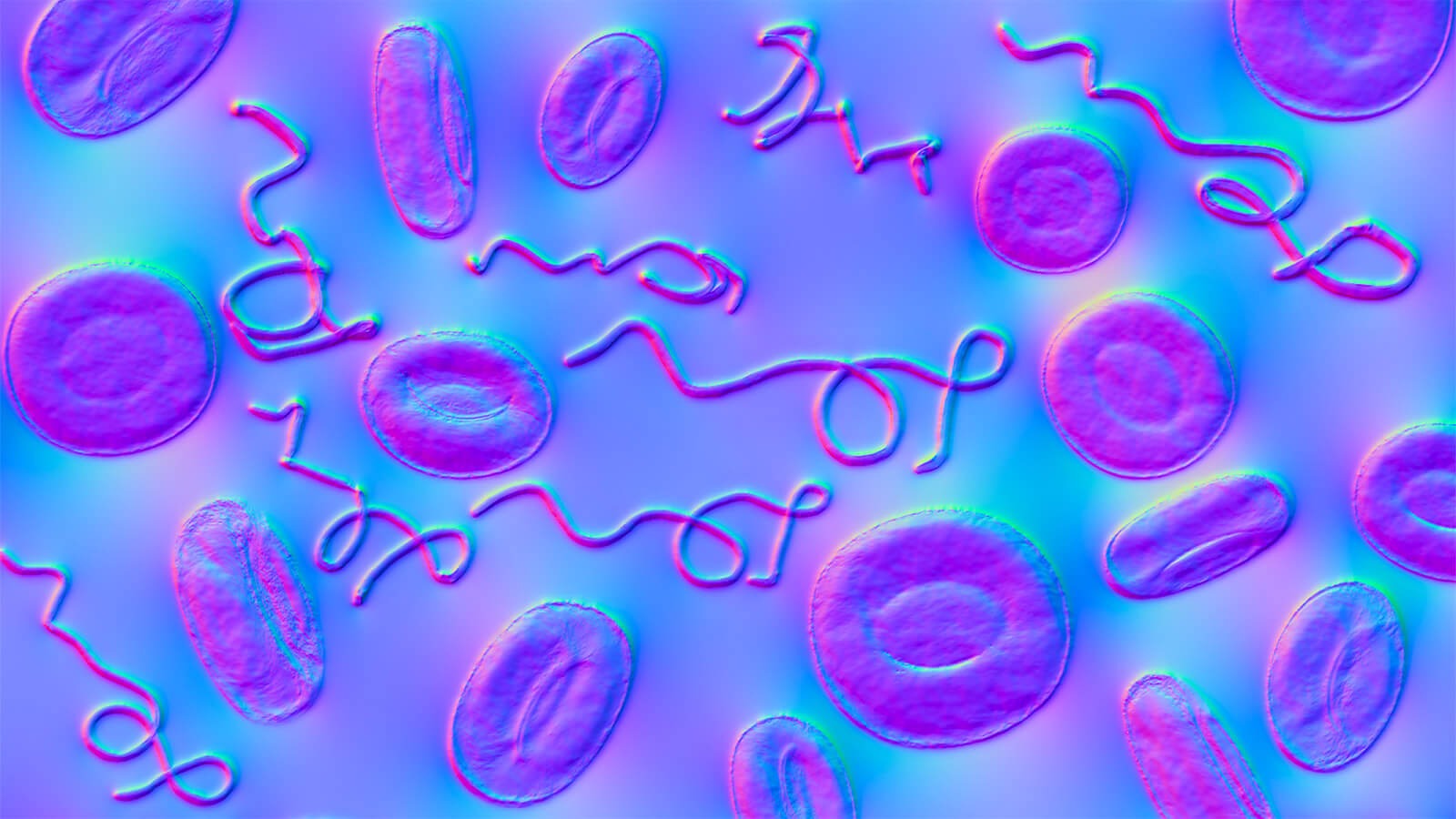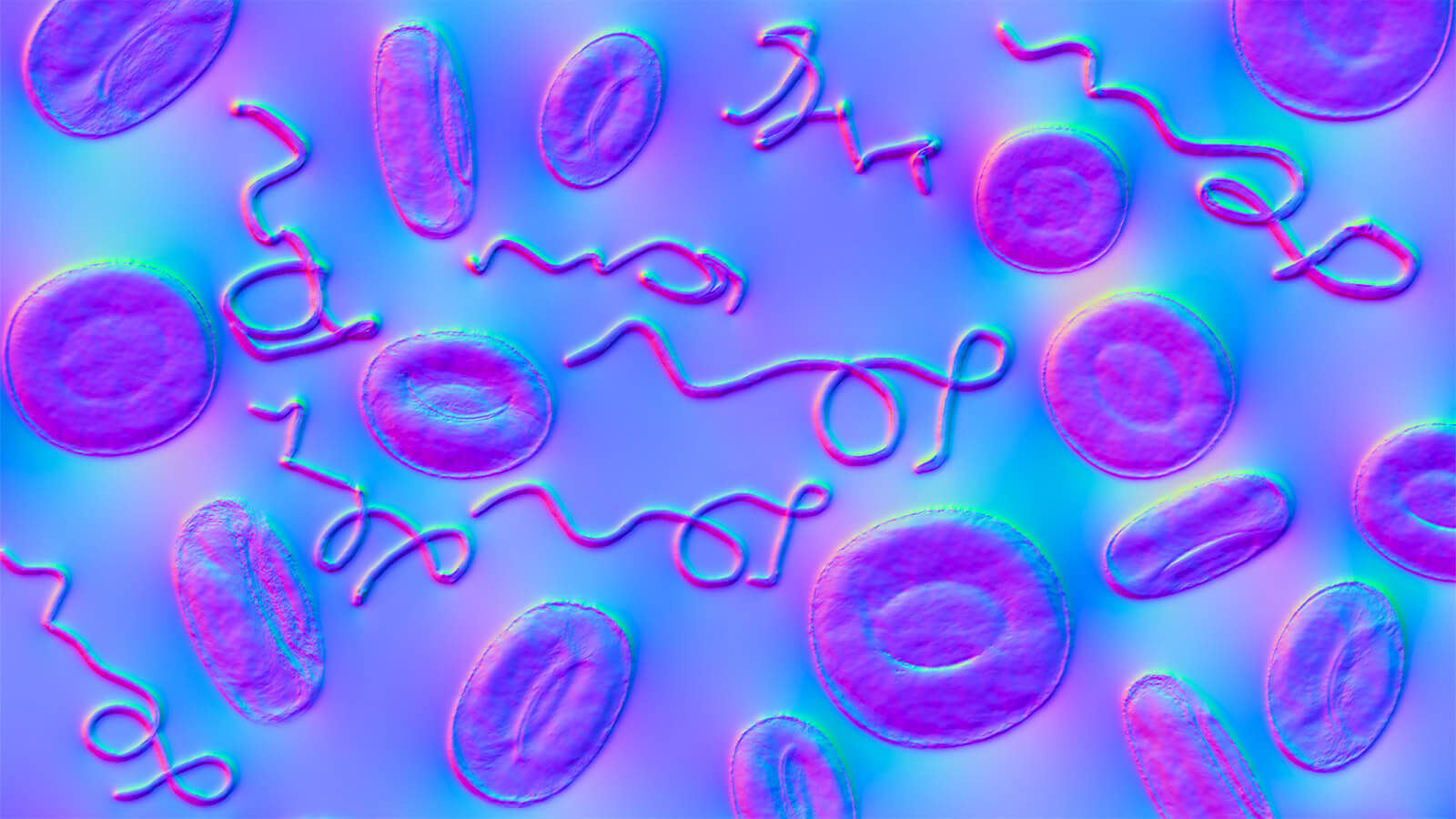
Lyme Disease Tests
Lyme disease testing and diagnosis pose significant challenges to modern medicine. This is because there is so much variation in both early symptoms and test results that a false negative or, less commonly, a false positive diagnosis becomes highly plausible. download the analysis request
In the early stages of Lyme disease, erythema migrans is the strongest indicator of infection. If this occurs and is associated with a tick bite and possibly the development of a lymphocytoma, antibiotic treatment should be initiated immediately, without waiting for test results to corroborate the diagnosis. This is because borrelia-specific antibodies do not appear until 2-6 weeks after the onset of infection 1, 2.
The first issue is that erythema migrans occurs in only 50% of cases, whereas in the same percentage of cases, patients with borrelia do not recall being bitten by a tick 3. In this instance, serological tests, culture, and PCR may serve as alternate methods for diagnosing the disease.

The primary diagnostic tools for Lyme borreliosis are serological ests and PCR
Serological tests begin with an Elisa test, which must be validated by an immunoblot test if the result is positive. However, for a variety of reasons, the standard serological antibody tests - Elisa followed by immunoblot - frequently produce false negative results.
To begin with, the specificity and sensitivity of these tests are poor, and the results could differ. Positive means both are positive at the same time 4, according to most guidelines 5, 6, 7, 8, a contentious judgment given that neither the Elisa test nor the immunoblot are standardised for the identification of Lyme-specific antibodies.
As long as the two tests aim to determine different antibodies, the challenge becomes normal. Thus, at least 15% of cases have a false negative immunoblot, which officially rejects the diagnosis of borreliosis even though the disease is present 9, 10.
However, a negative serological result does not rule out Lyme borreliosis for various reasons. Antibiotic treatment may prevent antibody formation, and seroconversion may not occur 11. Antibodies will also be undetectable if cortisone is used as an immunosuppressant, if the immune system is exhausted, or when there is a hereditary predisposition 12.
Consequently, the sensitivity of serological tests for Lyme Boreliosis can vary significantly:
- 50% for localized erythema migrans
- 77% for Lyme borreliosis
- 97% for chronic atrophic acrodermatitis
- 96% for Lyme arthritis
- 73% for non-specific Lyme disease 13
Polymerase Chain
Reaction (PCR) testing
may be relevant not only for skin biopsies collected in the early stages of infection, but also for cerebrospinal fluid punctures in the event of neuroboreliosis and synovial fluid punctures in the case of joint inflammation 14. A negative result, however, does not rule out the diagnosis of borreliosis.
The sensitivity of the PCR test for Borrelia depends on the stage of the disease and anatomical location.
- 65%–90% for skin biopsies during erythema migrans and for chronic atrophic acrodermatitis 15, 16, 17
- 50%–85% for joint samples 18
- 10%–30% for cerebrospinal fluid 19
It is also useful to assess antibodies in cerebrospinal fluid using the Elisa approach, as well as a novel method, the determination of the chemokine CXCL13, which is considerably enhanced in neuroboreliosis even in the early stages of the disease 20.
There is a chance that the first symptoms of the disease will not manifest until weeks, months, or even years after infection 21, 22, and laboratory tests may be of no use. In this case, we need a test that provides maximum certainty in diagnosing the disease.
The the latest generation test that offers us this assurance is none other than the EliSpot test conducted at the Armin Lab laboratory in Germany.

EliSpot epitomizes the cutting-edge approach to T-cell-based diagnostics for Lyme disease
As supported by the majority of conducted studies, existing methods for testing and diagnosing Borrelia infection present inherent challenges stemming from variations in sensitivity and specificity. However, a breakthrough has emerged in the form of advanced tests such as EliSpot and iSpot, designed to accurately reflect the ongoing activity of both chronic and recent Borrelia burgdorferi infections.
EliSpot demonstrates exceptional sensitivity, capable of detecting even a solitary reactive T cell against Borrelia burgdorferi. This method quantifies interferon-gamma production by T cells and boasts a sensitivity surpassing conventional ELISA testing by a factor of 20 to 200. EliSpot's sensitivity closely mirrors that of real-time RT-PCR analysis, yet it detects secreted proteins rather than messenger RNA (mRNA). The estimated sensitivity of the EliSpot test stands at 84%, with a specificity of 94%. When utilized alongside Immunoblot, this test furnishes a comprehensive portrayal of the patient's immune response to the infection and disease progression.
EliSpot holds promise for therapy monitoring purposes
Typically, this test should yield negative results within approximately 4 to 8 weeks post-effective therapy completion. The integration of two testing modalities, EliSpot and NK CD57+ immunophenotyping, complements efforts to decipher T cell-mediated immunity in vivo.
Clinical and case studies have revealed that chronic Lyme infections often entail alterations in cellular immune defenses. Indicators include a diminished count of NK cells (CD3-CD56+), particularly a reduced absolute count of activated NK cells (CD3-CD56+CD57+). Chronic Lyme patients commonly exhibit fewer than 100 CD57 cells/µl, contrasting with normal CD57 parameters observed in acute Borrelia burgdorferi infections and other diseases.
Given that ImunoMedica Clinic operates as a leading Lyme disease treatment center in Europe, we are committed to providing our patients with access to the most advanced testing methodologies available.
Through our collaboration with the ArminLab laboratory in Germany, for which we serve as representatives, ImunoMedica Clinic offers the most pertinent tests for Lyme disease diagnosis and treatment monitoring.
To select the tests for a definitive Lyme disease diagnosis, please download the form provided. The form comprehensively includes most of the analyses currently performed in the determination, assessment, and therapeutic monitoring of Lyme disease, as well as associated coinfections.
Bibliography
2. Molloy, Philip J., et al. "Detection of multiple reactive protein species by immunoblotting after recombinant outer surface protein A Lyme disease vaccination." Clinical infectious diseases 31.1 (2000): 42-47.
4. STRICKER RB, PHILLIPS SE: Lyme disease without erythema migrans: Cause for concern? Am. J. Med. (2003) 115(1):72-73.
2. Molloy, Philip J., et al. "Detection of multiple reactive protein species by immunoblotting after recombinant outer surface protein A Lyme disease vaccination." Clinical infectious diseases 31.1 (2000): 42-47.
3. ILADS Working Group. "Evidence-based guidelines for the management of Lyme disease." Expert review of anti-infective therapy 2.sup1 (2004): S1-S13.
4. STRICKER RB, PHILLIPS SE: Lyme disease without erythema migrans: Cause for concern? Am. J. Med. (2003) 115(1):72-73.
5. H. Hofmann, V. Fingerle, K.-P. Hunfeld, H.-I. Huppertz, A. Krause, S. Rauer, et al. Cutaneous Lyme borreliosis: guideline of the German dermatology society Ger Med Sci, 15 (2017)
6. S.A. Pancewicz, A.M. Garlicki, A. Moniuszko-Malinowska, J. Zajkowska, M. Kondrusik, S. Grygorczuk, et al. Diagnosis and treatment of tick-borne diseases recommendations of the polish society of epidemiology and infectious diseases Przegl Epidemiol, 69 (2015), pp. 421-428
7. https://www.nice.org.uk/guidance/ng95/resources/lyme-disease-pdf-1837756839877,
8. C. Eldin, A. Raffetin, K. Bouiller, Y. Hansmann, F. Roblot, D. Raoult, et al. Review of European and American guidelines for the diagnosis of Lyme borreliosis Med Mal Infect, 49 (2019), pp. 121-132
9. Bacon, Rendi Murphree, et al. "Serodiagnosis of Lyme disease by kinetic enzyme-linked immunosorbent assay using recombinant VlsE1 or peptide antigens of Borrelia burgdorferi compared with 2-tiered testing using whole-cell lysates." The Journal of infectious diseases 187.8 (2003): 1187-1199.
10. Tylewska-Wierzbanowska, Stanislawa, and Tomasz Chmielewski. "Limitation of serological testing for Lyme borreliosis: evaluation of ELISA and western blot in comparison with PCR and culture methods." Wiener Klinische Wochenschrift 114.13-14 (2002): 601-605.
11. Stricker, Raphael B., and Andrew Lautin. "The Lyme Wars: time to listen." Expert opinion on investigational drugs 12.10 (2003): 1609-1614.
13. M.M.G. Leeflang, C.W. Ang, J. Berkhout, H.A. Bijlmer, W. Van Bortel, A.H. Brandenburg, et al. The diagnostic accuracy of serological tests for Lyme borreliosis in Europe: a systematic review and meta-analysis BMC Infect Dis, 16 (2016), p. 140
14. Straubinger, R. K.: PCR-Based quantification of Borrelia burgdorferi organisms in canine tissues over a 500 Day postinfection period. J Clin Microbiol 38 (2000), 2191 – 2199.
15. S.E. Moter, H. Hofmann, R. Wallich, M.M. Simon, M.D. Kramer Detection of Borrelia burgdorferi sensu lato in lesional skin of patients with erythema migrans and acrodermatitis chronica atrophicans by ospA-specific PCR J Clin Microbiol, 32 (1994), pp. 2980-2988
16. S. Brettschneider, H. Bruckbauer, N. Klugbauer, H. Hofmann Diagnostic value of PCR for detection of Borrelia burgdorferi in skin biopsy and urine samples from patients with skin borreliosis J Clin Microbiol, 36 (1998), pp. 2658-2665
17. B. Wilske, V. Fingerle, U. Schulte-Spechtel Microbiological and serological diagnosis of Lyme borreliosis FEMS Immunol Med Microbiol, 49 (2007), pp. 13-21
18. B. Jaulhac, I. Chary-Valckenaere, J. Sibilia, R.M. Javier, Y. Piémont, J.L. Kuntz, et al. Detection of Borrelia burgdorferi by DNA amplification in synovial tissue samples from patients with Lyme arthritis Arthritis Rheum, 39 (1996), pp. 736-745
19. Cerar, K. Ogrinc, J. Cimperman, S. Lotric-Furlan, F. Strle, E. Ruzic-Sabljic Validation of cultivation and PCR methods for diagnosis of Lyme neuroborreliosis J Clin Microbiol, 46 (2008), pp. 3375-3379.
20. Raffetin, A., et al. "Unconventional diagnostic tests for Lyme borreliosis: a systematic review." Clinical Microbiology and Infection 26.1 (2020): 51-59.
21. Steere, A. C.: Lyme disease. N Engl J Med 321 (1989), 586–596
22. Asch, E. S.; BUJAK, D. I.; WEISS, M.; PETERSON, M. G.; WEINSTEIN, A.: Lyme disease – An infectious and postinfectious syndrome. J Rheumatol 21 (1994), 454–461
One of Europe's Premier Lyme Disease Treatment Centers Operates at ImunoMedica Clinic
How can you become a patient of our clinic?
Throughout the whole process, from your initial contact, through treatment and after you leave our clinic, our patient coordinators will guide you through the steps and support you with all their expertise, attention and kindness.
*
We are here to help you
Our patient coordinator will contact you soon
Phone: +40.771.518.946, e-mail: office@imuno-medica.ro












